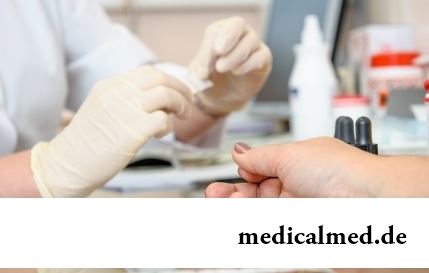





Ofloksin
Application instruction:
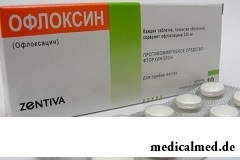 Ofloksin – antibacterial agent of group of ftorkhinolon.
Ofloksin – antibacterial agent of group of ftorkhinolon.
Form of release and structure
Dosage forms:
- Tablets, film coated: almost white or white color, a round biconvex form, with an engraving "200" on one party and dividing risky – on another; internal structure at a break – white or almost white (in blisters: on 7 pieces, in a cardboard pack 2 blisters; on 10 pieces, in a cardboard pack 1 or 2 blisters);
- Solution for infusions: transparent light liquid with a flavovirent shade (on 100 ml in glass colourless bottles, in a cardboard pack 1 bottle).
Active ingredient of Ofloksin – ofloxacin:
- 1 tablet – 0,2 g;
- 1 bottle of solution – 0,2 g.
Auxiliary components:
- Tablets: povidone 25, lactoses monohydrate, кросповидон, starch corn, magnesium stearate, half-oxameasures, talc;
- Solution: dinatrium эдетат a dihydrate, Acidum hydrochloricum concentrated sodium chloride, water for injections.
In addition as a part of a cover of tablets: macrogoal 6000, gipromelloza 2910/5, titanium dioxide, talc.
Indications to use
Ofloksin's use is shown at treatment of the infectious and inflammatory pathologies caused by microorganisms, sensitive to drug:
- Bronchitis, pneumonia;
- Meningitis;
- Sinusitis, average otitis, pharyngitis, laryngitis;
- Infections of joints and bones;
- Infectious diseases of skin, soft tissues;
- Infectious and inflammatory diseases of digestive tract, biliary tract and other abdominal organs;
- Endometritis, oophoritis, salpingitis, cervicitis, prostatitis, parametritis;
- Pyelonephritis, cystitis, urethritis;
- Gonorrhea;
- Infections of generative organs (orchitis, colpitis, epididymite);
- Clamidiosis.
To patients with a neutropenia and other disturbances of the immune status drug is appointed for prevention of infections.
Besides, solution is applied at treatment of a septicaemia.
Contraindications
- Epilepsy (including the anamnesis);
- Deficit glyukozo-6-fosfatdegidrogenazy;
- Reduction of the threshold of convulsive activity of a brain, including states after the had stroke, a craniocereberal injury or processes of an inflammation in the central nervous system (CNS);
- Age up to 18 years;
- Period of pregnancy and breastfeeding;
- Hypersensitivity to drug components.
With care Ofloksin sick with atherosclerosis of vessels of a brain, the instruction in the anamnesis is recommended to appoint to disturbances of cerebral circulation, organic lesions of TsNS, a chronic renal failure.
Besides, it is contraindicated to patients to appoint tablets with damage of sinews after the previous therapy of a hinolonama, and when lengthening on an electrocardiography of an interval of QT it is necessary to take with caution.
Route of administration and dosage
Tablets, film coated
Pill is taken to food or during meal, inside, swallowing entirely and washing down with enough water.
The doctor appoints a dose and duration of administration of drug on the basis of clinical indications, considering severity of a condition of the patient, a type of an infection and functional parameters of a liver and kidneys.
The recommended daily dose can make from 0,2 to 0,6 g therefore the dose to 0,4 g a day is taken for 1 time, it is desirable in the morning, and more than 0,4 g divide a dose into two equal parts and accept 2 times a day at regular intervals. Duration of therapy is 7-10 days.
At severe forms of infectious pathologies or at the excess weight of the patient the daily dose can be raised to 0,8 g.
At treatment of uncomplicated infections of lower parts of urinary tract appoint 0,2 g a day for 3-5 days, at gonorrhea – 0,4 g once.
Initial treatment by Ofloksin in the form of solution for infusions after improvement of a condition of the patient can be continued by reception of tablets in the same dose.
Contraindicated simultaneous use with antacids.
Solution for infusions
Solution is entered intravenously kapelno.
The dose is appointed individually taking into account weight of a current and localization of an infection, sensitivity of microorganisms, a clinical condition of the patient, function of kidneys and a liver.
Treatment begin with single slow introduction 0,2 g of drug within 0,5-1 hours. After improvement of a condition of the patient transfer to reception of tablets in the same daily dose.
The recommended dosing:
- Infections of urinary tract: on 0,1 g 1-2 times a day;
- Infections of generative organs and kidneys: on 0,1-0,2 g 2 times a day;
- Respiratory infections, fish soup, throat and nose (pharyngitis, sinusitis, average otitis, laryngitis), soft tissues and skin, bones and joints, abdominal cavity, septic infections: on 0,2 g 2 times a day, for achievement of therapeutic effect a dose it is possible to raise to 0,4 g 2 times a day;
- Prevention of infections at the expressed decrease in immunity: 0,2 g mixed from 5% by glucose solution, infusion duration – 0,5 hours (it is necessary to mix solutions just before introduction).
The single dose of Ofloksin for treatment of patients with functional disorder of kidneys (the clearance of creatinine (CC) of 50-20 ml/min.) has to correspond 1/2 from average recommended and be applied 1-2 times a day. At KK less than 20 ml/min. appoint a single dose of 0,2 g, further – every other day on 0,1 g a day.
At a hemodialysis and peritoneal dialysis – on 0,1 g of 1 times a day.
For patients with a liver failure the daily dose should not exceed 0,4 g.
Side effects
- Alimentary system: nausea, vomiting, anorexia, diarrhea, meteorism, gastralgia and other abdominal pains, pseudomembranous coloenteritis, increase in activity of liver enzymes, cholestatic jaundice, hyperbilirubinemia;
- Cardiovascular system: lowering of arterial pressure (ABP), vasculitis, tachycardia, collapse;
- Nervous system: headache, spasms, uncertainty of movements, dizziness, tremor, paresthesias and numbness of extremities, increase in intracranial pressure, intensive and/or dreadful dreams, uneasiness, psychotic reactions, phobias, hyperexcitability, depression, hallucinations, confusion of consciousness;
- System of a hemopoiesis: anemia, agranulocytosis, leukopenia, pancytopenia, thrombocytopenia, aplastic and hemolitic anemia;
- Sense bodys: disturbances of sense of smell, taste, hearing, balance, diplopia, disturbance of color perception;
- Musculoskeletal system: tendosinovit, mialgiya, a tendinitis, arthralgias, a rupture of a sinew;
- Urinary system: a renal failure, increase in level of concentration of urea in blood, acute intersticial nephrite, a giperkreatininemiya;
- Dermatological reactions: petechias (dot hemorrhages), violent hemorrhagic dermatitis, photosensitization, papular rash;
- Allergic reactions: fever, itch, skin rash, small tortoiseshell, allergic pneumonitis, eosinophilia, allergic nephrite, Quincke's edema, Stephens-Johnson's syndrome, bronchospasm, mnogoformny exudative erythema, Lyell's disease, acute anaphylaxis;
- Others: superinfection, dysbacteriosis, at a diabetes mellitus – a hypoglycemia, a vaginitis.
Besides, Ofloksin can cause side effects characteristic of one of drug forms:
- Tablets: from the alimentary system – hepatitis, a musculoskeletal system – muscular weakness, рабдомиолиз;
- Solution for infusions: reactions in an injection site in the form of pain, reddening, thrombophlebitis.
Special instructions
At pneumococcal pneumonia and acute tonsillitis Ofloksin is not shown for use.
Treatment duration drug should not exceed 2 months.
The patient needs to avoid influence of direct sunshine and uviolizing.
At emergence of symptoms of side effect from TsNS, pseudomembranous colitis, development of allergic reactions therapy should be cancelled. For treatment of laboratory confirmed pseudomembranous colitis purpose of peroral forms of Vancomycinum and metronidazole is shown.
Ofloksin's use in rare instances causes development of a tendinitis which can lead to a rupture of sinews (Achilles tendon), is more often at patients of advanced age. Therefore at emergence of a tendinitis carrying out an immobilization of an Achilles tendon and receiving consultation of the orthopedist is required.
Women during treatment are not recommended to use vaginal tampons in connection with big risk of development of candidiasis.
Effect of drug can worsen a current of a myasthenia, at the patients inclined to a porphyria – to promote increase of attacks, at bacteriological diagnosis of tuberculosis – to yield false-negative results.
At a renal failure or a liver regular control of level of maintenance of an ofloksatsin in a blood plasma is required. Because of risk of development of toxic effects patients with a heavy renal and liver failure need dose adjustment.
Alcohol intake during treatment by Ofloksin contraindicated.
Use of solution for infusions in pediatrics is possible only at threat of life of the child when it is impossible to use other, less toxic drugs, after careful assessment of estimated advantage and potential threat of development of side effects. At appointment the average daily dose is recommended of 0,0075 g on 1 kg of weight of the child, the maximum dose should not exceed 0,015 g on 1 kg.
During Ofloksin's use the patient cannot be engaged in potentially dangerous types of activity, including management of vehicles and mechanisms.
Medicinal interaction
At simultaneous use of Ofloksin:
- Cimetidinum, methotrexate, furosemide and medicines blocking canalicular secretion – promote increase in level of concentration of an ofloksatsin in a blood plasma;
- The non-steroidal anti-inflammatory drugs derivative of methylxanthines and a nitroimidazole – increase risk of neurotoxic effects;
- Glucocorticosteroids – promote increase in risk of a rupture of sinews, especially at patients of advanced age;
- Inhibitors of a karboangidraza, sodium bicarbonate, citrates (the drugs alkalizing urine) – increase probability of development of nephrotoxic effects, crystallurias.
At a combination with ofloksatsiny the clearance of theophylline decreases by 25%, the level of maintenance of glibenclamide increases in a blood plasma.
Control of a condition of coagulant system of blood at the accompanying therapy by indirect anticoagulants – antagonists of vitamin K is required.
Products and antacids, calciferous, aluminum, salts of iron or magnesium, reduce absorption of an ofloksatsin therefore the interval between their reception and Ofloksin's reception has to make 2 and more hours.
The risk of lengthening of an interval of QT increases at a combination of tablets to antiarrhytmic drugs of the class IA and III, macroleads, tricyclic antidepressants (the means extending QT interval).
Ofloksin's solution pharmaceutical is compatible from 0,9% solution of sodium of chloride, 5% fructose solution, Ringer's solution, 5% solution of glucose (dextrose), but it cannot be mixed with heparin.
Terms and storage conditions
To store in unavailable to children, the dry place at a temperature of 10-25 °C, – to protect solution from influence of direct sunshine.
Period of validity – 3 years.
Drug for cough Terpinkod is one of leaders of sales, not because of the medicinal properties at all.

Partial and the more so full loss of hearing significantly reduces quality of life. Difficulties with communication lead to loneliness and замкн...
Section: Articles about health
Cold is such painful that each sigh becomes a victory, heat "knocks" down, and the ache in joints forces to think only of pain. Some people with approach of the first symptoms of cold make the self-sacrificing decision to have a disease standing, and to a beam...
Section: Articles about health
The metabolism at each person proceeds in own way. However between the speed of this process and disposal of excess weight after all all have a dependence. Unfortunately, the people inclined to try on itself numerous "miracle" diets, not always consider this circumstance and with the most resolute intentions begin to eat so that artificially slow down the metabolism instead of to accelerate it. Except quite clear disappointment, incorrectly picked up systems...
Section: Articles about health
For anybody not a secret that the modern person eats not as his ancestors. For the last 100 years in broad access appeared with...
Section: Articles about health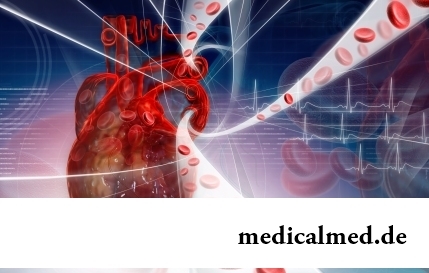
The state of health of the person in many respects depends on chemical composition of biological liquids of an organism. Specialists consider that PH value of these solutions has to be in range of 7,35-7, 45. A deviation in the smaller party (so-called "acidulation") to a chra...
Section: Articles about health
All the known slogan "Protect Men!" arose not from scratch. In a sense, the nature created men much less adapted for vital disorders, than it seems at first sight. Statistically, men are ill more often, than women, have the majority of illnesses heavier and earlier die. The situation is aggravated with the fact that our fathers, husbands, brothers and sons are not always inclined to care for the health. Partly it happens because of unwillingness of t...
Section: Articles about health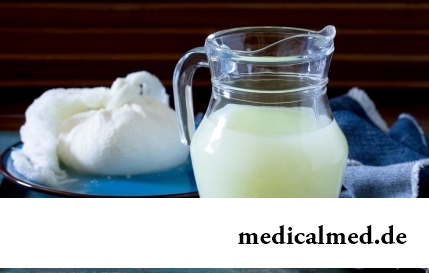
Milk and products of its processing by right occupy one of the main places in a diet of the modern person. They contain necessary...
Section: Articles about health
Statistically, in Russia about 34% of citizens smoke. Most of consumers of tobacco has problems with health sooner or later. Not only smokers, but also their relatives suffer. Besides, cigarettes are expensive, and need of their acquisition heavy bry...
Section: Articles about health
Color of plants is caused by presence at them of certain chemical compounds. Let's talk about what is meant by various colors of vegetables and fruit and what properties they give them....
Section: Articles about health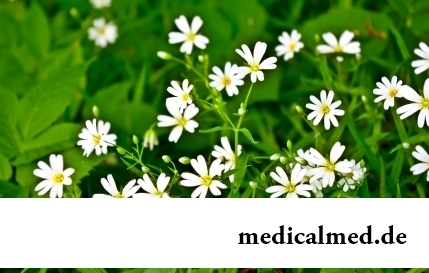
Wood louse – the ordinary-looking unpretentious plant extended in all territory of our country. It quickly expands, and sometimes for...
Section: Articles about health
Contrary to popular belief, the multiple sclerosis (MS) is not connected neither with sclerous changes of walls of vessels, nor with age forgetfulness and problems with concentration of attention. This disease has the autoimmune nature. Pathological process of a vyrazh...
Section: Articles about health
The brain of the person is studied not one hundred years, but the quantity of the riddles connected with this body increases rather, than decreases. Perhaps, numerous delusions concerning a structure and functioning of a brain are explained by it, many of which arose long ago, but continue to exist and today. Such we are ready to acquaint readers with the most widespread myths....
Section: Articles about health
Popular joke that there are no healthy people, and is nedoobsledovanny, most of us considers an honest truth, and put that...
Section: Articles about health
Several decades ago the basil (the district khan, реан, Reagan) was considered as a part of the Caucasian or east cuisine, but today it strongly took the place on tables of Russians. Greens of this plant possess a strong, pleasant smell and specific fresh taste, because of to...
Section: Articles about health
Statistically cystitis 25-30% of women up to 40 years have. With age this indicator raises, besides many do not get to statistics because do not see a doctor. The most sad that after the regular visits to doctors, long reception of antibiotics and life in the mode "it is necessary to take care" cystitis all the same is returned to a half of women. Symptoms of cystitis are unambiguous and it is impossible to confuse them with anything: bladder pain, burning at an urination, frequent desires to go to a toilet, a vynuzhd...
Section: Articles about health
At this plant there are a lot of names: tuberiferous sunflower, Jerusalem artichoke, solar root, earth pear. Contrary to spread...
Section: Articles about health
Diseases of joints often begin imperceptibly for the person. The first stages of destruction of the cartilaginous tissue providing soft and free sliding of heads of bones in joint bags proceed slowly and absolutely without serious consequences. Especially unpleasantly for that this пр...
Section: Articles about health
Each failure in work of bodies and systems of a human body is, as a rule, shown by the whole complex of symptoms. In particular, malfunctions with health often cause emergence of cosmetic defects in the form of rashes on a face. Experienced doctors know that localization of heat-spots usually depends on what disease the patient has....
Section: Articles about health
The popular expression "run from a heart attack" became the motto of the people supporting active lifestyle. Moreover, run became peculiar...
Section: Articles about health
About influence of fasting days on an organism it is told much – both about advantages, and about shortcomings. It is considered that fasting day in the form of a short-term monodiet is useful, promoting effective removal of slags from an organism whereas irregular, it is excessive п...
Section: Articles about health
Life of the modern child is extremely active and difficult. Information strain which is experienced by the school student and did not dream pupils of last times. Careful parents, wishing well to the children, will organize a set of additional classes in circles, sports sections and music schools. In such situation the child needs continuous care and good nutrition to keep health and high performance....
Section: Articles about health
Small appetite at the child – the complaint which pediatricians should hear practically from each mother. Most often it is carried to разр...
Section: Articles about health
What they, women? Beautiful, gentle, passionate and at the same time windy, gusty, and nervous. And what is stranger: have all these qualities of the woman at the same time. But here only the mood their time sharply changes on completely opposite: in the morning...
Section: Articles about health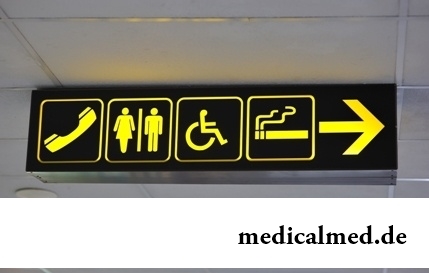
The saying "the rich do not know how the other half lives" is known to all. In a broad sense it is that we can not always understand the person whose features of a state are unknown to us. If with physiological characters of diseases the situation is more or less clearly (having noticed them, we realize that to the person nezdorovitsya), then with symptoms of the illnesses affecting the mental sphere everything is much more difficult. Not absolutely usual behavior is quite often perceived surrounding as a ridiculous eccentricity, or that much ху...
Section: Articles about health
The sudden heat on all body which is followed by perspiration and a cardiopalmus – the phenomenon familiar to many people. Most often t...
Section: Articles about health
Subfebrile temperature call fervescence to 38 degrees, and subfebrile condition - existence of such temperature over 3 days, and quite often it happens without the visible reasons. Existence of subfebrile condition - a strong indication of disturbances in an organism which can...
Section: Articles about health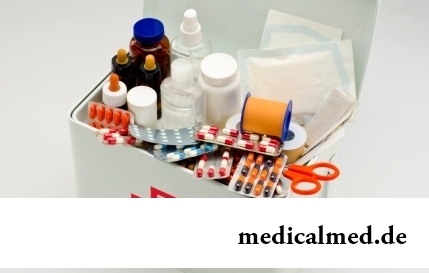
All know that self-treatment is dangerous. However absolutely it is almost impossible to do without it. Rate of modern life does not allow to handle each small trouble to the doctor and information on ways of independent delivery of health care is quite available. Means, all of us have only one: to learn to give this help competently and in those limits in which it is possible for the person who does not have vocational education....
Section: Articles about health
